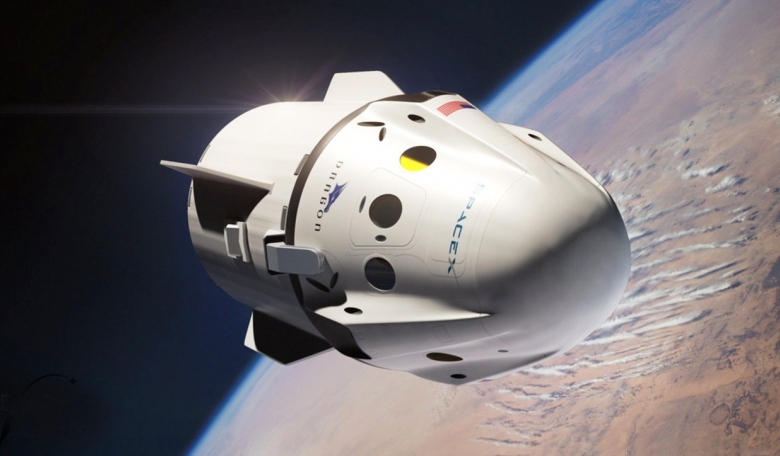At a press conference held on February 27, 2017, SpaceX founder and CEO Elon Musk announced plans to launch a commercial flight carrying two crew members to the Moon in 2018. The press conference came as a surprise to many in the industry, as it was announced less than 24 hours prior with the subject of the conference remaining a secret even for many SpaceX employees.
The mission is expected to last about eight days and take two crew members aboard a Dragon 2 spacecraft on a looping trajectory around the moon. Musk did not name the two individuals who are paying to go to space, but mentioned that SpaceX had “been approached to do a crewed mission to beyond the Moon by some private individuals”. While not providing much detail on these individuals, Musk had mentioned that they were “very serious”, not from Hollywood, and were acquainted with each other. Other information, including their gender, has not been released at this time. The paying customers will have to undergo extensive flight training prior to the launch. While Musk did not specify the cost for each individual, he did say that a seat on the flight costs more than a ticket to the ISS, currently running $58 million.
Crewed flights have not gone beyond low Earth orbit since the 1972 Apollo 17 lunar landing mission. According to Musk, the Moonshot mission would launch on a Dragon 2 crew spacecraft using a SpaceX Falcon Heavy booster, from the Kennedy Space Center in Florida. The mission is expected to launch about six months after the NASA crewed mission to the space station using the Falcon 9/Dragon 2 spacecraft. The mission will not be making a moon landing, and is likely to end in a water landing back on Earth. “This would do a long leap around the moon,” Musk said. “We’re working out the exact parameters, but this would be approximately a week long mission – and it would skim the surface of the moon, go quite a bit farther out into deep space, and then loop back to Earth. I’m guessing probably distance wise, maybe 300,000 or 400,000 miles.”
SpaceX is currently developing the Dragon 2 spacecraft for crew missions to the ISS and low Earth orbit, but neither the Dragon 2 nor the Falcon Heavy rocket (developed using the company's own funds) have yet gone on their maiden missions. Musk expects to launch a crew-less Dragon 2 on a Falcon 9 for the ISS later this year in order to test the spacecraft for manned flights. The new craft has newly designed heat shields that will allow it to reenter the Earth's atmosphere up to ten times. Musk had also mentioned installing a “deep space communications system”, necessary for longer trips, that still has to be installed on board the Dragon 2.
In a press release issued along with the press conference, SpaceX expressed gratitude to NASA for making the Moonshot mission possible. “Most importantly, we would like to thank NASA, without whom this would not be possible. NASA’s Commercial Crew Program, which provided most of the funding for Dragon 2 development, is a key enabler for this mission. In addition, this will make use of the Falcon Heavy rocket, which was developed with internal SpaceX funding. Falcon Heavy is due to launch its first test flight this summer and, once successful, will be the most powerful vehicle to reach orbit after the Saturn V moon rocket. At 5 million pounds of liftoff thrust, Falcon Heavy is two-thirds the thrust of Saturn V and more than double the thrust of the next largest launch vehicle currently flying.”, said SpaceX.
Musk had also noted that should NASA want to procure seats on the Moonshot mission before the private customers he would give top priority to NASA. SpaceX expects to be able to launch one or two private Moonshot missions per year.











